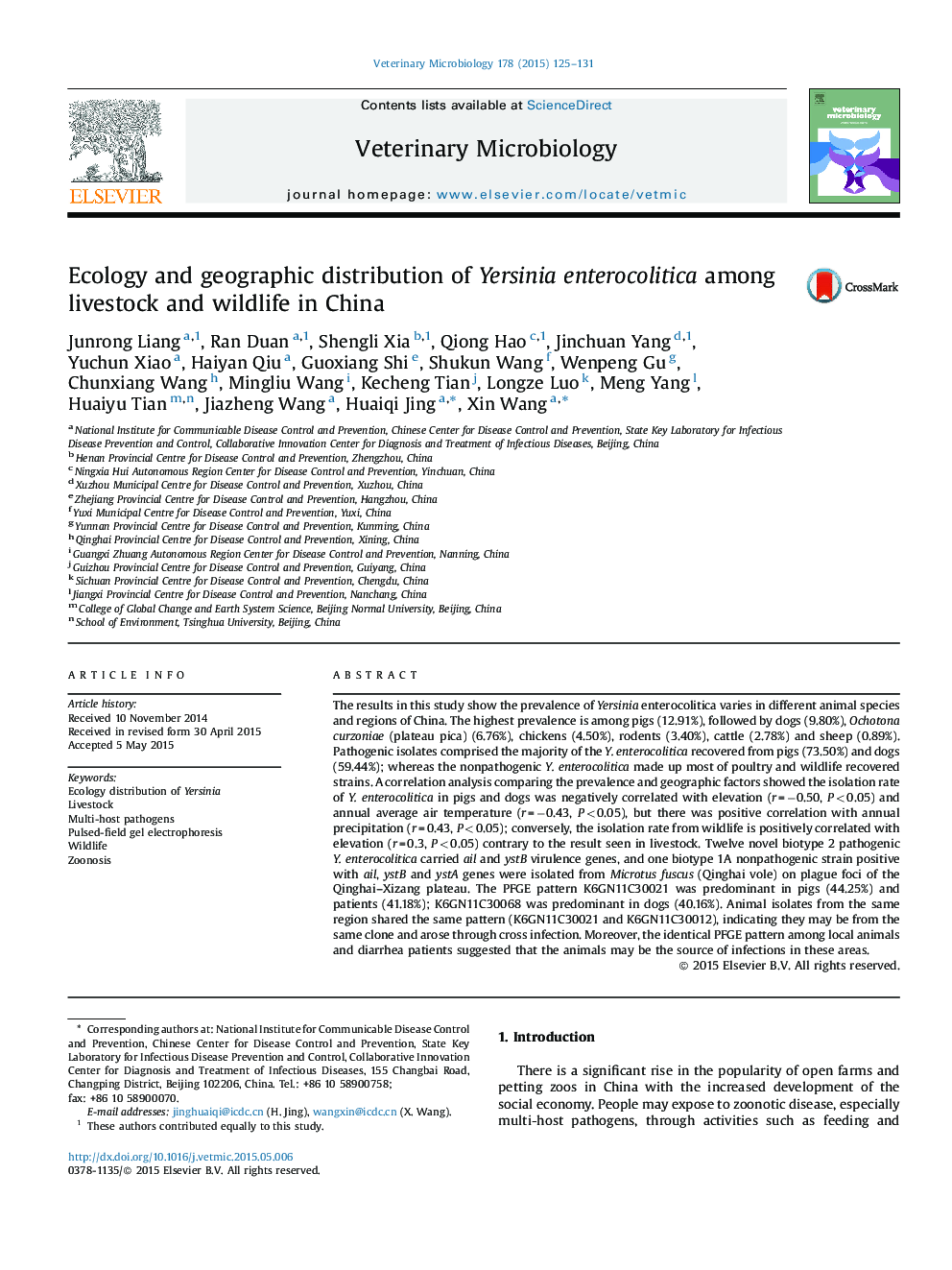| کد مقاله | کد نشریه | سال انتشار | مقاله انگلیسی | نسخه تمام متن |
|---|---|---|---|---|
| 5799897 | 1555349 | 2015 | 7 صفحه PDF | دانلود رایگان |

- The prevalence of Y. enterocolitica varies in different animal species and regions.
- The highest prevalence is from pigs, dogs, and majority isolates were pathogenic.
- The elevation, precipitation and air temperature are associated with Y. enterocolitica in animals.
- Novel Y. enterocolitica was isolated from Microtus fuscus on plague foci.
- Identical PFGE pattern from animals and patients suggested the source of infection.
The results in this study show the prevalence of Yersinia enterocolitica varies in different animal species and regions of China. The highest prevalence is among pigs (12.91%), followed by dogs (9.80%), Ochotona curzoniae (plateau pica) (6.76%), chickens (4.50%), rodents (3.40%), cattle (2.78%) and sheep (0.89%). Pathogenic isolates comprised the majority of the Y. enterocolitica recovered from pigs (73.50%) and dogs (59.44%); whereas the nonpathogenic Y. enterocolitica made up most of poultry and wildlife recovered strains. A correlation analysis comparing the prevalence and geographic factors showed the isolation rate of Y. enterocolitica in pigs and dogs was negatively correlated with elevation (r = â0.50, P < 0.05) and annual average air temperature (r = â0.43, P < 0.05), but there was positive correlation with annual precipitation (r = 0.43, P < 0.05); conversely, the isolation rate from wildlife is positively correlated with elevation (r = 0.3, P < 0.05) contrary to the result seen in livestock. Twelve novel biotype 2 pathogenic Y. enterocolitica carried ail and ystB virulence genes, and one biotype 1A nonpathogenic strain positive with ail, ystB and ystA genes were isolated from Microtus fuscus (Qinghai vole) on plague foci of the Qinghai-Xizang plateau. The PFGE pattern K6GN11C30021 was predominant in pigs (44.25%) and patients (41.18%); K6GN11C30068 was predominant in dogs (40.16%). Animal isolates from the same region shared the same pattern (K6GN11C30021 and K6GN11C30012), indicating they may be from the same clone and arose through cross infection. Moreover, the identical PFGE pattern among local animals and diarrhea patients suggested that the animals may be the source of infections in these areas.
Journal: Veterinary Microbiology - Volume 178, Issues 1â2, 9 July 2015, Pages 125-131